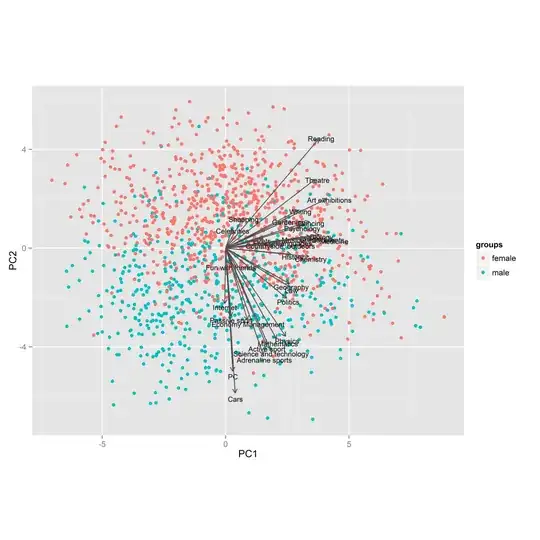I'm struggling to figure out how these adjusted $R^2$ values for linear regression were calculated with $n=8$ observations:
Footnote 124 says that for a model with just an intercept, $RSS$ (residual sum of squares) equals $TSS$ (total sum of squares). So using $R^2=1-\frac{RSS}{TSS}$, we get $R^2=0$ for the model with just an intercept. Then I use the formula $$R^2_{adj} = 1-\left((1-R^2)\frac{n-1}{n-k-1}\right)$$ where $n$ is the number of observations (here $n=8$), and $k$ is the number of slopes (not including the intercept). So for the model with just the intercept, I get $$R^2_{adj} = 1-\left((1-0)\frac{8-1}{8-1}\right) = 0$$ whereas the book has $0.4077$.
I get a different answer for the other models as well. For instance, for the model only using $X_2$ I get $$R^2_{adj} = 1-\left(\frac{6981.58}{10693.5}\cdot \frac{8-1}{8-2}\right)=0.2383.$$
For the model with $X_1$ and $X_2$: $$R^2_{adj} = 1-\left(\frac{915.375}{10693.5}\cdot\frac{8-1}{8-3}\right) = 0.8802$$
For the model using all three predictors: $$R^2_{adj} = 1-\left(\frac{908.166}{10693.5}\cdot\frac{8-1}{8-4}\right) = 0.8514.$$
What am I missing or doing wrong?
